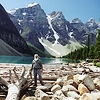Question: The entire history of humanity is a process of development of human desires. Baal HaSulam writes in his articles that both in nature and within a person there are four levels of desires: inanimate, vegetative, animate, and human. Therefore, we see these four levels outside of us.
What are these desires and how many of them are there, in quality and in quantity?
Answer: In principle, the desire to fill oneself is common to all levels of nature. What to be filled with depends on the deficiency the desire feels and on what will give it the feeling of fulfillment and pleasure.
If this desire is at the inanimate level, then it wants to realize itself as it is. At the same time, it is not able to add or subtract anything from its desire but only acts in the same way it exists. This desire is called inanimate. It cannot develop, but wants to fulfill whatever it feels it is lacking, that is, to get closer to something, to distance itself from something. It works in this form.
Then the desire develops from the inanimate level to the vegetative one.
In the vegetative level, there are already changes in the desire itself. It grows, changes its form, creates all kinds of auxiliary desires and tools for its own realization. Therefore, it develops lengthwise, in breadth, grows, moves toward the sun, air, and water. It acquires the ability to control its initial desire in order to realize itself. This desire is called vegetative.
However, it cannot move from its place; like a plant, it grows in the same place it was planted. It can spread from there, but its initial root remains where it was planted by the upper force, something or someone external. It continues to develop from this state.
Yet, this type of desire can reproduce, influence the environment, and be influenced by the environment. It is like plants that interact with the four states of nature: winter, spring, summer, and autumn. The inanimate desire, however, does not have this ability.
The vegetative desire differs from the inanimate by the fact that it spreads, but so far, it remains at the same place it exists.
The next desire is the animate. It already can move from place to place, meaning that it has freedom of movement. Naturally, its reproduction is much more complicated and consists not of the same states as the states of a plant but requires connection with others.
In the animate desire there are male and female individuals that move, build a family between them, actively search for sustenance, and so on. There is already a fight for a place, for a species, and for a female here. That is, this desire has a whole set of tools for realizing itself in an optimal way.
The next level of desire is the human who contains all the previous desires. In addition, he has freewill in their implementation, and he can move, combine, move away, approach, and change his goal for what and how he can develop.
The human is not limited in his desires and their fulfillment, everything depends only on him. Therefore, his desires: inanimate, vegetative, animate, and human, give him complete freedom. He is the leader, he is the king of nature.
[248960]
From KabTV’s “Basics of Kabbalah” 12/3/18
[248960]
From KabTV’s “Basics of Kabbalah” 12/3/18


No comments:
Post a Comment